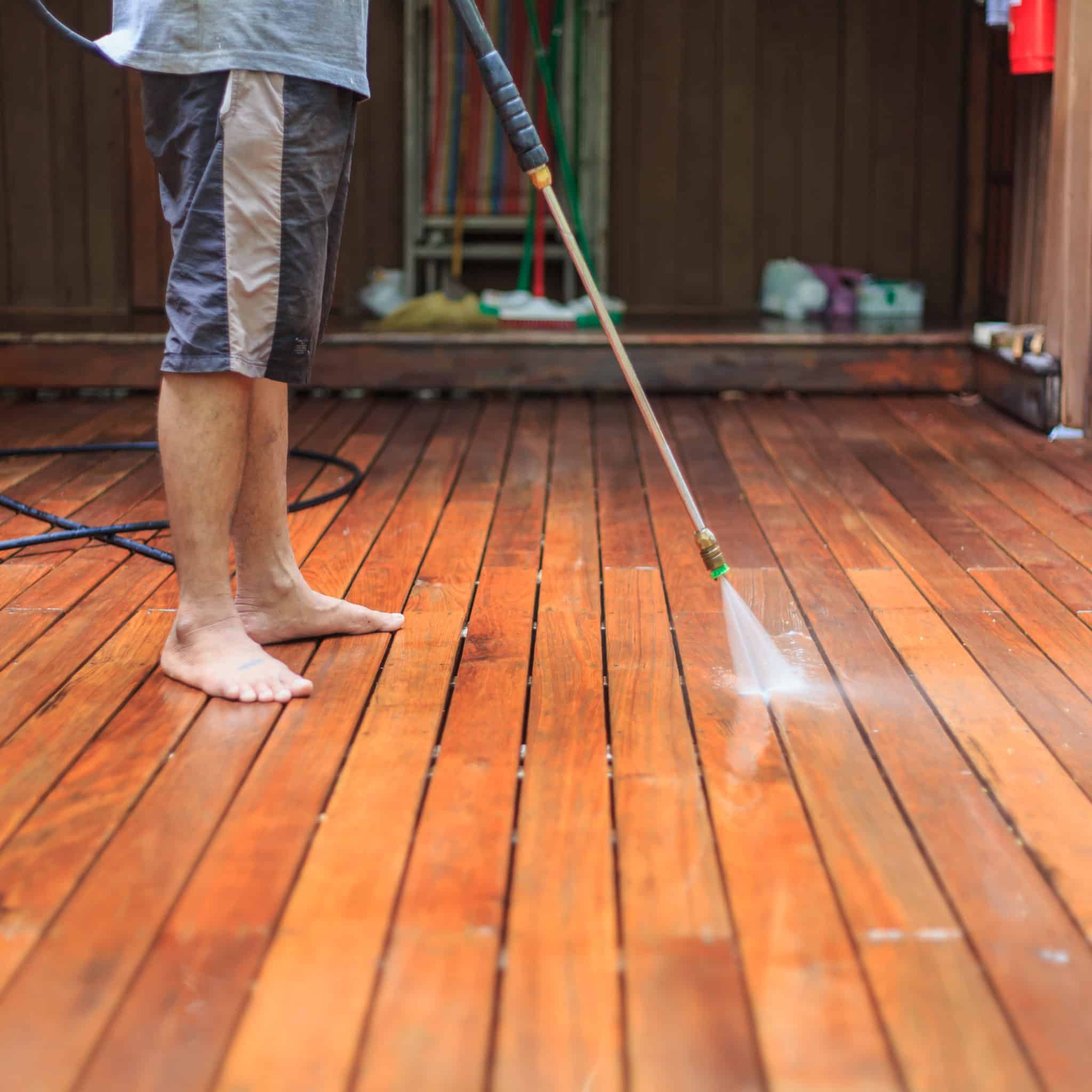Creating your own deck wash solution can be a cost-effective and environmentally conscious way to maintain your outdoor space. Different formulations target various cleaning needs, from general grime to stubborn mold and mildew.
Gentle All-Purpose Deck Cleaner
This solution is suitable for routine cleaning of lightly soiled decks and general upkeep.
- Ingredients:
- 1 gallon (approximately 3.8 liters) of warm water
- 1/4 cup (approximately 60 ml) of mild liquid dish soap (pH-neutral, biodegradable preferred, avoid degreasers or harsh additives)
- (Optional) 1/2 cup (approximately 120 ml) of borax for enhanced cleaning and mild mildew resistance.
- Mixing & Application:
- In a large bucket, combine the warm water with the dish soap.
- If using borax, add it slowly to the warm water and stir until completely dissolved before adding the soap.
- Wet the deck surface with plain water before applying the cleaning solution.
- Apply the solution using a garden sprayer, mop, or a soft-bristled deck brush.
- Allow the solution to sit on the surface for 10-15 minutes. Do not allow it to dry completely.
- Scrub lightly with a soft brush if necessary, working with the grain of the wood.
- Rinse the deck thoroughly with clean water from a garden hose until all soap residue is removed.
Oxygen Bleach Deck Wash (For Mold, Mildew, and Algae)
Oxygen bleach (sodium percarbonate) is effective for cleaning organic stains, mold, mildew, and algae. It is generally considered safer for wood and plants than chlorine bleach when used correctly.

- Ingredients:
- 1 gallon (approximately 3.8 liters) of warm water
- 3/4 to 1 cup (approximately 180-240 ml) of powdered oxygen bleach (e.g., products containing sodium percarbonate).
- (Optional) 1/4 cup (approximately 60 ml) of mild liquid dish soap to help the solution adhere to surfaces.
- Mixing & Application:
- In a plastic bucket, dissolve the oxygen bleach completely in warm water. Stir gently until no powder is visible. The mixture may fizz slightly.
- If using, add the dish soap and mix gently.
- Pre-wet the deck surface.
- Apply the solution generously, especially on affected areas, using a sprayer or brush.
- Let the solution work for 15-30 minutes, keeping the surface damp. Reapply if it starts to dry.
- Scrub stubborn areas with a deck brush, moving with the wood grain.
- Rinse thoroughly with copious amounts of clean water until no foaming or residue remains.
Important Considerations for Homemade Deck Washes
- Test Spot: Always test any cleaning solution on a small, inconspicuous area of your deck first. Wait 24 hours to check for any discoloration or adverse effects on the wood or finish.
- Safety First: Wear protective gear, including waterproof gloves and safety glasses, when mixing and applying cleaning solutions.
- Plant Protection: Thoroughly water down any nearby plants, grass, and garden beds before you begin. Cover sensitive plants with plastic sheeting. Rinse vegetation again after cleaning the deck to remove any overspray.
- Avoid Chlorine Bleach: Standard chlorine bleach (sodium hypochlorite) can damage wood fibers, is harsh on fasteners, and harmful to plants and the environment. If its use is contemplated, extreme caution, significant dilution (e.g., 1 part bleach to 4 parts water), and thorough rinsing are essential. Never mix chlorine bleach with ammonia, acids (like vinegar), or other cleaning products, as this can create dangerous toxic fumes.
- Thorough Rinsing: Complete and thorough rinsing with clean water is crucial after using any cleaning solution to remove all residues, which could otherwise attract dirt or affect the wood.
- Wood Type: Softwoods like pine or cedar are more susceptible to damage from aggressive scrubbing or high-pressure washing than hardwoods.
- Pressure Washer Use: If using a pressure washer, employ a low-pressure setting (typically 500-800 PSI for softwoods, up to 1200 PSI for hardwoods). Use a wide fan tip (25-40 degrees) and keep the nozzle moving consistently with the grain of the wood, maintaining a distance of at least 12 inches to prevent gouging or splintering.










